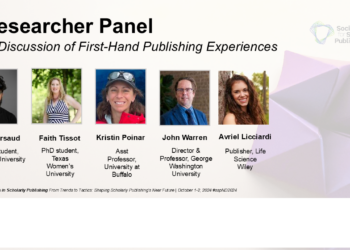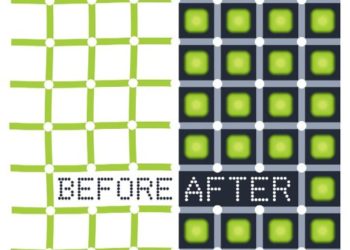There is something about the term “post-publication peer review” that doesn’t quite fit. On one hand, post-publication peer review seems inevitable. As more scholarly content moves online (and not just scholarly content), with little or no editorial gatekeeping–or in the case of services like PLOS ONE, a stripped-down form of peer review–, surely there is going to evolve a method of evaluating materials after the fact. On the other hand, is material that appears online without prior editorial review properly called a “publication”? And if such a piece elicits comments from people outside a specific field, could such commenters be called, “peers”? The term “post-publication peer review” seems like an early and imprecise way of describing something that is just coming into existence, akin to “horseless carriage” to describe an automobile. But “horseless carriage” was a good place to start, even if the vehicle was being defined by what it was not (horseless) rather than what it was. As we enter the age of the self-driving car we might ponder the significance that “self” in this instance refers not to you or me but to a machine. With self-driving cars in our driveway, are selfies bound to follow?

The notion of post-publication peer review implies a before and after in two senses. First there is the chronology of the original document and the comments upon it (it is, after all post-publication peer review). Second and more importantly there is the implication of two publishing ecosystems, one that went before and one that came after. The one that went before is traditional publishing, which remains the dominant paradigm today. This form of publishing is sometimes called “toll-access publishing,” a misleading term in that it defines traditional publishing by a single aspect and leaves out, for example, the editorial and marketing dimensions. In contrast to traditional publishing we have open access (OA) publishing, and it is for that paradigm that we need to come up with a better term than “post-publication peer review.”
This is harder than it sounds because the world of OA publishing is diverse and seems likely to remain diverse for some time. In addition to such distinctions as green vs. gold OA, there is the question of the source of funding, the complication of hybrid publications, and the rights or capabilities that readers–and text-mining machines–have with regard to the content. On top of this is the wide range of editorial practices, some of which are barely distinguishable from those of traditional publishers (and are often operated by these very same publishers) and some of which largely or wholly abrogate the role of editorial gatekeeper. How do we talk about post-publication peer review if we can’t pin down pre-publication peer review?
What traditional and OA publishing share is that editorial review exists along a continuum, a point that serves to undermine the “gatekeeper” metaphor, with its implication of a binary state (your piece is evaluated by the gatekeepers, but then enters the hallowed halls without further scrutiny). In the traditional model, papers and books are circulated first among colleagues. Then the document is submitted to a publisher that sees to it that the proposed publication is reviewed by an assortment of people in a variety of ways, of which peer review is but one. If the work is published, it then enters the world of public discourse. Reviews may appear, and some works receive the ultimate compliment of a citation. In a world of social media, even traditionally published works may begin an afterlife of tweets and Facebook “likes.” The gatekeepers are long behind us, but different forms of evaluation go on.
With OA publishing the first step is typically the same as in the traditional model: the circulation of a document among colleagues. But when it comes time to submit a paper or book to a publisher (for OA, the activity is mostly with papers), however, things may change. For starters, the editorial review process ranges all over the place. But even after a manuscript is accepted and made available on the Web, comments may continue to appear, and the nature of the open Web is that the comments can be made by anyone just about anywhere. Some papers, of course, will simply appear on the Web and then be forgotten. Indeed, perhaps the fastest-growing publishing paradigm today could be called “post-and-forget publication,” a form of publication where the act of production, leading up to making something openly available, is viewed as an end in itself.
This raises the interesting and important question of whether publication in an OA journal represents the end of a process or the beginning of a different one. The difference is marketing, a term that is often misunderstood in scholarly circles. Marketing means creating demand for something. Traditional publishers do this with their brands and (for books) their authors. For OA publishers the challenge is to continue to keep pushing a particular paper after it has appeared online. There are many ways to do this, of which simply making the content openly available is one (allowing an article to get indexed by search engines and pointed to by bloggers and others). But to continue to keep the article in the eyes of its prospective readers, new means of attracting attention have to be developed. We are only in the earliest stages of this.
Rather than talking about post-publication peer review, we really should be talking about an ongoing conversation that begins with colleagues and perhaps never really ends. This is going to be frustrating for those who yearn for the solidity of a fixed text, and these people have my sympathy. But the Web is developing its own kinds of systems, some of which may prove valuable, some of which are at best silly. For publishers working on the Web today, the question increasingly will be how to begin with OA, how to develop the means to identify the qualities of a publication after it has made its first public appearance.
A footnote to this discussion pertains to finance. The prevailing method of financing OA is the gold model, where authors or their proxies pay for publication. There is an inherent structural problem with gold OA in that payment is centered on one individual, whereas traditional publishing spreads costs across the set of all customers. Thus a gold OA publisher has little incentive (and no money) to continue to flog a paper after it has appeared online. I suspect that we are likely to see tiered services develop in the world of gold OA–a fee (tiny) for submission, a fee for publication, a fee for ongoing hosting, a fee for inclusion in new discovery programs, etc. The business of OA publishing is going to become more complex in the coming years and will require a new generation of astute managers.
Discussion
16 Thoughts on "Ending with Open Access, Beginning with Open Access"
Do APC journals presently do any article level marketing, such as press releases? There is certainly money for journal level marketing, but that is hard to do without pitching hot articles. As you point out, it is hard for an APC journal to pitch specific articles because the other, unpitched author’s are paying for it. Perhaps OA is against marketing.
Some OA publishers do press releases. For example, PLoS and Co-Action have done them for some articles. I don’t see this as a conflict. A press release for what is seen as an important article enhances the brand of the journal just like with a subscription journal. That enhances the prestige of all the articles published in a journal benefiting all authors.
Good point, PLOS has done a tremendous job of drawing attention to the work they publish. This could be seen as a strong marketing program, not necessarily for the authors (although they benefit from it) but for the journals, whose business depends on attracting authors.
I take it the many authors whose work is not featured, and who are paying the bills, do not feel slighted. Good to know, but somewhat surprising. Perhaps they feel that promoting the journal promotes their work, a rising tide lifting all boats, as it were. Then too I have a conjecture that many of the major authors publish a few articles in OA journals just to support the cause. They would also support boosting the journal.
Probably not for a couple of reasons-
1. They are probably not actually paying for it. PLOS waves a lot of fees and those they don’t usually comes from grants. A sort of someone’s money, not my problem attitude. Being critical of something you did not pay for might be considered bad taste as well.
2. If we are talking academics why do they care if their paper gets press? Assuming most are publishing for the tenure or grants than all they care about is the act of publishing. Not to sound too cynical but does anyone care if the article makes a difference as long as someone somewhere peer reviewed it and you can show it to your grant/tenure committee?
2b. At worse getting a lot of press can be a black mark. Some people take it as a sign of doing ‘popular science’ not ‘real science’. Yes, your university press office loves it but do your peers?
If this is a problem for all-OA journals such as PLoS, wouldn’t it also be a problem for non-OA journals which have standard page charges? Authors don’t seem to have raised a fuss about the idea that they all pay their fees for publication and yet only some get spotlighted (or if they have grumbled, I haven’t noticed).
It just doesn’t seem like something that unduly concerns people…
All sensible and serious APC journals do, and do it beyond simple press releases. They put promotion pieces in their official blogs, do video interviews of the authors, and of course tweet a lot.
But of course they do it only for their best articles.
Come to think of it, the editorial decision on which articles to promote is very much analogous to the traditional gatekeeping. Even in journals where perceived scientific importance is not a criteria of publication decision, it certainly is a criteria when deciding whether staff resources are used on article promotion.
With my papers I’ve been very happy with effective article promotion (measured in press-releases leading to high downloads and journalists writing about the science) in both a subscription journal and an APC journal, but then again, my most academically noted paper (measured in citations-per-year) was never marketed at all by the journal. The latter kind of attention is the only kind that really matters. And fortunately, we can’t buy much of it with pitching.
Why would you assume that APC journals are any less interested in promoting their articles? That makes no sense to me. Promotion of articles to the press is something that publishers do based on the article, not on the business model by which it came to be published, surely? Certainly we make no distinction based on OA/non-OA – it’s all about the article and its ‘story’.
Joe is really talking mainly about journals here, even though he mentions books a few times. For books there is no difference between traditionally published and OA books as far as post-publication peer review is concerned. That function has always been served by book review media, which will continue to serve this function in an OA world. Reviews by experts in the field published in scholarly journals are the best post-publication peer reviews we have and will continue to have. Journal articles did not have this kind of review in the print subscription-based world, nor will they have it in the OA world. So, what’s the big difference? The fact that there is more opportunity for non-experts to participate in post-publication review, not as peers but just as interested parties? My reaction to that change is, so what? It doesn’t make a huge difference.To my mind, the more interesting experiment going on in some quarters is the use of crowd-based pre-publication review, which has benefited some authors, like Kathleen Fitzpatrick, with her Planned Obsolescence (2011).
First, let’s get past Joe’s terms of “flogging” an article (in behalf of the author). As is pointed out in the comments, publishers “flog” that which promotes their journals to attract both authors, those who read the journal articles and institutions that use “peer review” as a surrogate for having abrogated their own responsibility to evaluate their colleagues and their oeuvre.
Second, as has been written about and discussed in SK, peer review is problematic. As has been pointed out, here, the poor overworked academics don’t readily volunteer their services for peer review forcing the editor to scramble to meet this requirement. Blind review is no guarantee of quality. With the increase to publish, the flow into select journals makes this more problematic
Third, publishing is schizophrenic. It is one of the default mechanism for determing promotion and tenure separate from the intrinsic idea of collegial exchange of which both pre and post review are now an attempt to recapture this conversation.
Fourth, in the “good old days” academic freely crossed discplinary barriers. Today with cross discipinary teams of researchers, defining a “peer” is becoming problematic. Also, as these barriers become thin and transparent and new ones created, we, as academics, at times are treading in new territory, probably equally at risk in the expertise column as “amateurs”. With the Internet and increasing ability to search deep into texts, there are many who might be called “public intellectuals” in the HSS community or interdisciplinary scholars in the STM arena.
Fifth, a major publisher has admitted that OA can be profitable and they are launching several dozen new ventures in these areas. OA, while profitable is a new and evolving business model as well as addressing the needs of a variety of scholars whether ensconced in the ivory towers, think tanks or operating independently. This brings into question not just the financial questions debated in SK recently but the attempt by publishers and journals to retain the sole right of “quality control”. Remember the story about the virtual produce machines and the distributors maintaining distribution control of the path through QC. In the virtual world, for journals, this may also be called into question.
Sixth, funding agencies are now looking outside of Journal Impact Factors as having a high weight in decisions for grant making.
As more publishers understand the OA options as a profitable path, and both “professional” and “amateurs” are finding common intellectual grounds for scholarly exchange, it may be time to look at the opportunities to address the evolution (note, given the concern over Christensen’s “disruption” here, we will eschew his terminologies)
I find your last statement interesting (As more publishers….). You do know that OA is over 20 years old now and hardly a new way of doing business. I wonder which granting agencies are looking outside of IF in making decisions.
Lastly, your contributions seem to be based on opinion and not too much on cited fact. Perhaps you can enlighten me and others on what you base your opinions.
The last paragraph of the article and in particular the last sentence has been interesting-n-revealing. Considering all aspects and in particular the APC the stickiest of all, it feels that http://www.ijsmet.com is in the right direction for this exclusive class of community called, ” The Scientific Community “. We need information and that includes the unfiltered ones too, for there is noting like a waste in this Universe. So let the user decide for self what is ok -n- what is not. Possibility of progress and development is, therefore, an open ended matter and never is a close ended affair, any day.



